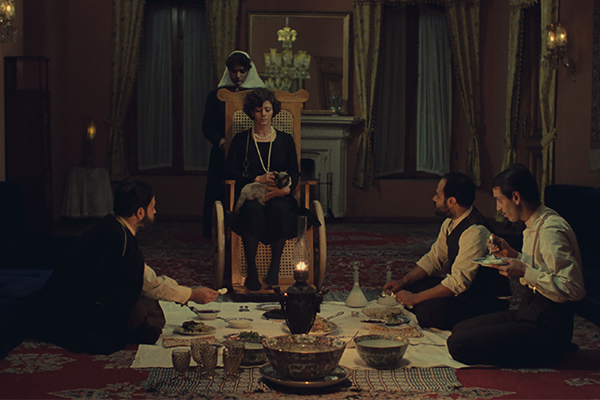The Chess Game of the Wind
(Mohammad Reza Aslani, Shatranj-e baad, 1976)
PostED ON OCTOBER 9 AT 3:05 PM
Released once in 1976, three years before the Islamic revolution, The Chess Game of the Wind features a breathless Iranian society, symbolised by a wealthy noble family. In a large estate, their decadence descends into a massacre game over an inheritance.

In The Chess Game of the Wind, Mohammad Reza Aslani creates a film filled with prodigious visions and impressive ideas, where everything, absolutely everything, living beings or objects, seems to play a role. The house, its stairs, its furniture, the wooden wheelchair with graphic wheels, are all bewitching. They emit muffled and seductive sounds, like a rhythmic inhaling that punctuates the action. Human beings of all different ages and temperaments arrange themselves there, as almost inert elements, before the sudden unleashing of inevitable and unavoidable violence. The work evokes Conversation Piece by Luchino Visconti, released at the same time, demonstrating how the end of a political and moral era in a country can be generated in the vacuum of private spaces. The Persian element obviously responds with a few poetic and disturbing finds, a metaphor for the societal disintegration to come, like a certain scene of a body curled up on itself, covered with a magnificent glass dome, exquisitely tinted with solemnity. ‘Dramatic fiction’ in the Hollywood sense of the term, The Chess Game of the Wind contrasts with the cinematography of this customarily more ethnological country.
Virginie Apiou

